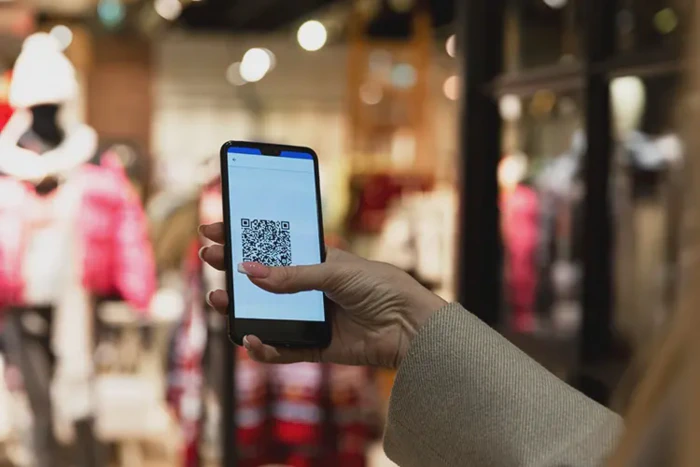Inclusive Digital Signage: How to Make Your Displays Accessible to Everyone

Nowadays, you can find digital signage almost anywhere, in retail stores, transportation hubs, restaurants, and public areas. It’s a powerful tool for communication, providing information and directions, advertising, and promoting products and services.
But have you ever thought about whether everyone can access and fully engage with digital signage as easily as you can? If digital signage is not designed with inclusivity in mind, it may unintentionally exclude people with disabilities, limiting their access to important information and services.
So, whatever your goals in digital signage are, one of the keys to success is to properly engage with a wide range of audiences that represent different cultural and social backgrounds and make sure your digital signage is ADA-compliant and accessible for everyone.
So, what does it mean to create inclusive digital signage?
As technology advances, it’s important to ensure that our digital spaces are welcoming and usable for people of all abilities.
Digital signage goes beyond just eye-catching graphics and catchy slogans. It’s about ensuring that everyone can interact with and understand the content displayed regardless of their abilities.
According to the World Health Organization (WHO), approximately 15% of the world’s population lives with some form of disability.
Making digital signage ADA-compliant and accessible for disabled people is not only a legal requirement but also a moral responsibility.
By prioritising inclusivity in digital signage design, businesses and organisations can enhance their engagement with a diverse audience. According to recent studies, businesses with accessible digital signage witness a 20% increase in customer engagement. So, investing in inclusive digital signage isn’t just the right thing to do – it’s also a smart business decision!
Understanding Accessibility Standards
In order to ensure that everyone can use digital signage, it’s essential to follow accessibility standards such as the Americans with Disabilities Act (ADA) and Web Content Accessibility Guidelines (WCAG). These standards provide guidelines on how to make digital content accessible to people with disabilities, including those with visual, auditory, motor, and cognitive impairments.
How to Design Inclusive Digital Signage
When designing digital signage, there are several key considerations to keep in mind to ensure accessibility for people with disabilities:
1. Text and Font Size:
Use clear, easy-to-read fonts and avoid small font sizes. Select appropriate fonts like Arial or Helvetica and sizes between 36pt and 48pt for better readability, especially from a distance.
Remember, not everyone can easily read small or stylised fonts, so prioritise clarity over aesthetics.

2. Colour Contrast:
It’s important to consider high colour-contrast ratios when designing text and background colours. A minimum contrast of 70% should be used to make the text easier to read from a distance and up close.
Using dark text on a light background or vice versa is recommended, while colour combinations such as green and black, black and red, blue and purple, and light green and yellow should be avoided. This helps people with low vision or colour blindness read content more easily.
In addition, studies have shown that people can struggle when reading text with plain white backgrounds. Therefore, consider using different background colours for your text.
3. Captioning for Video Content:
If you display video content on your digital signage, it’s important to include captions or subtitles to make it accessible to people with hearing impairments.
You can also include visual descriptors or sign language interpreters with the content, which can enhance understanding even further. To do so, you can use the EasySignage platform, which allows you to divide your screen into two layers. One layer can be used to display video or audio content, while the other layer can be used to display sign language interpreters. This will make it easier for people to understand your content even better.
4. Use Audio Option for Visual Content:
Visual impairment is a serious issue that affects millions of people worldwide. In fact, according to the World Health Organisation, about 282 million individuals are visually impaired globally. This can make it difficult for people to access information displayed on digital signage, especially if it is in the form of visual content.
So, to make digital signage more accessible and inclusive for people with visual impairments, you can provide audio descriptions of the content being displayed. This is where EasySignage’s background audio technology can be very useful. Businesses and organisations can make their digital signage more inclusive by adding audio and voice-over ads, wayfinding maps, and even restaurant menus.
For example, by providing audio descriptions of menu items using the background music tool, customers with visual impairments can easily navigate the menu and make informed choices. This can make a huge difference in their dining experience and help them feel more comfortable and included.
5. QR Code:
QR codes can be a helpful tool to provide additional information to visitors. Some of your clients may have difficulty reading due to their inability to read from a distance. To ensure everyone can access the information, you can use EasySignage’s QR Code generator to create and update QR codes without requiring any external tools. Just ensure that the QR codes are large enough and readable so visitors can easily scan them and access the information they need.
Another example of using QR codes is to create one that opens a web application on the phone for different content, such as audio, maps, or other languages. This can be especially useful for visitors who prefer to consume information in a different language or format.

6. Web Application
Businesses can use the EasySignage Web Application to create customised and inclusive digital signage content for their audiences. With its user-friendly interface, EasySignage allows companies to seamlessly display and host various websites, web applications, or shared resources on their digital signage, making them accessible to everyone.
Additionally, businesses can use EasySignage’s scheduling and targeting features to deliver personalised messages based on location, time of day, or specific customer demographics. By using EasySignage, businesses can ensure that their digital signage content resonates with all customers, regardless of their backgrounds or abilities, resulting in a more engaging and inclusive experience.
7. Offer Content in Multiple Languages:
In today’s interconnected world, language should not become a barrier to accessing vital information. Everyone should have access to information, regardless of the language they speak. Multilingual content ensures that non-native speakers can benefit from digital signage.
Moreover, multilingual content is important for businesses and organisations that operate globally. It helps them to communicate with their customers, build trust, and promote a more connected and inclusive society.
8. Clear and Concise Messaging:
Keep it simple! Use plain language and straightforward visuals to convey your message effectively. Avoid jargon or overly complex designs that may be confusing for some individuals. Remember, the goal is to make your message easily readable for everyone.
9. Ensure Screen Placement and Height Compliance:
The ADA provides guidelines for screen placement and height to accommodate wheelchair users. Screens should be mounted at an appropriate height and angle to be easily viewable from a seated position.
Screen enclosures should be positioned 27 to 80 inches from the ground.
There should be enough clear floor space in front of digital signage screens to allow people with wheelchairs to approach the screen closely without obstacles.
The ground space or clear floor around the display should measure 30 by 48 inches.
Wall-mounted screens can only stick out a maximum of 4 inches from the wall.
Controls, such as touchscreens or interactive elements, should be within reach range for people with disabilities. The ADA recommends a location no lower than 15 inches and no higher than 48 inches above the floor to ensure accessibility. The digital signage kiosk should also have a 15 to 20 degree upward slope.
If the screen is tilted, it should not exceed 30 degrees from the vertical plane.

In the end, inclusivity should be at the forefront of digital signage designs. Making it more accessible isn’t just about following regulations; it’s about creating an environment where every person feels valued and supported, regardless of their abilities. Inclusivity aims to provide equal access to information, with the goal of creating a world where every sign has a story that everyone can read.